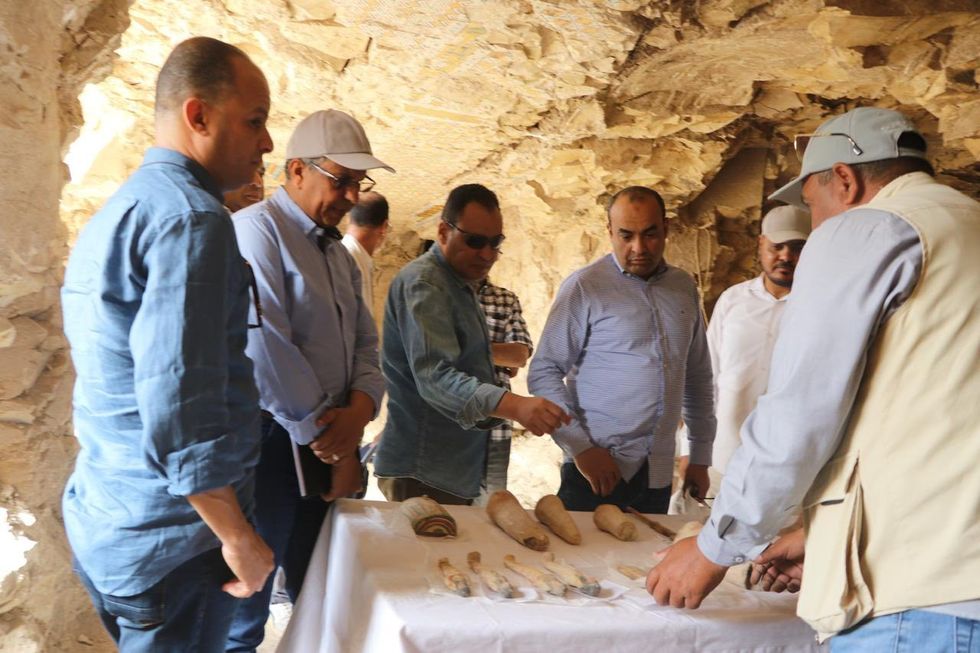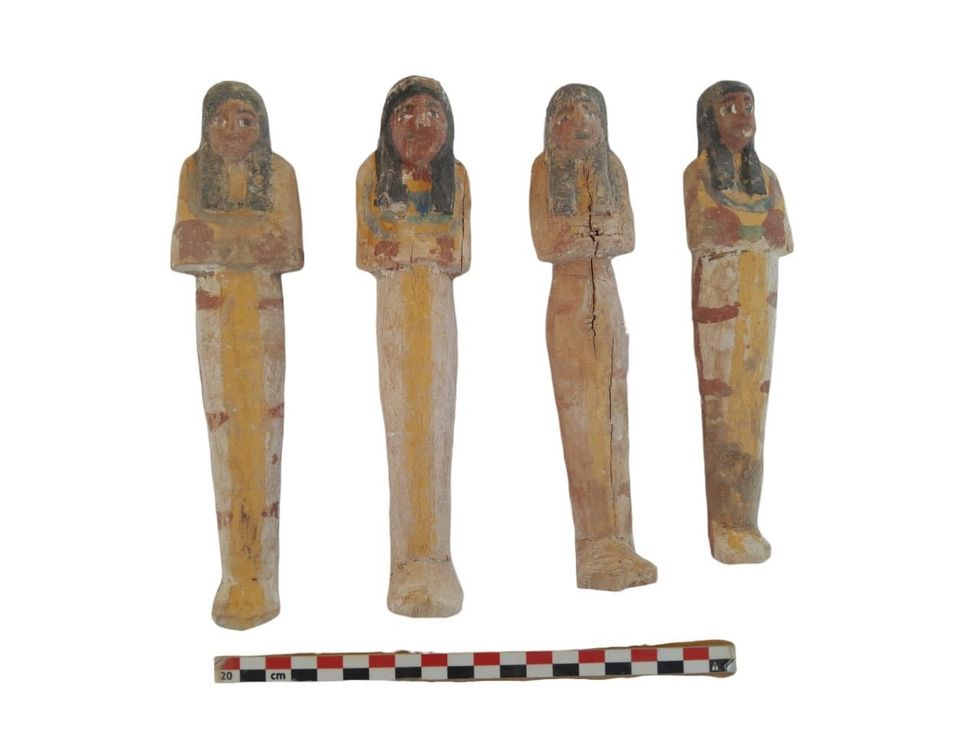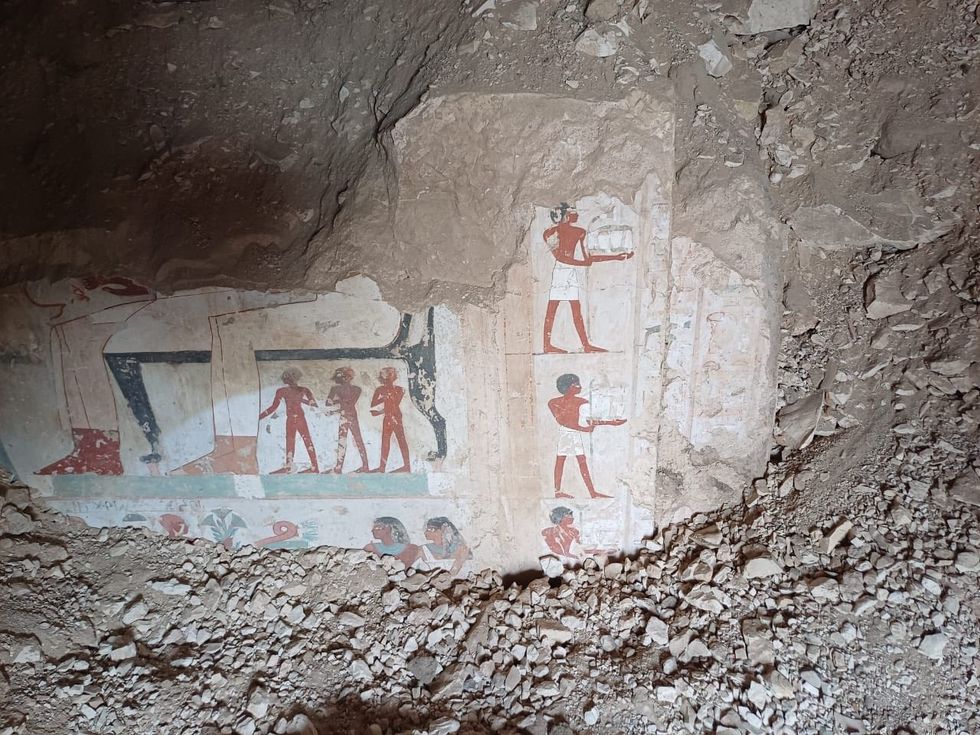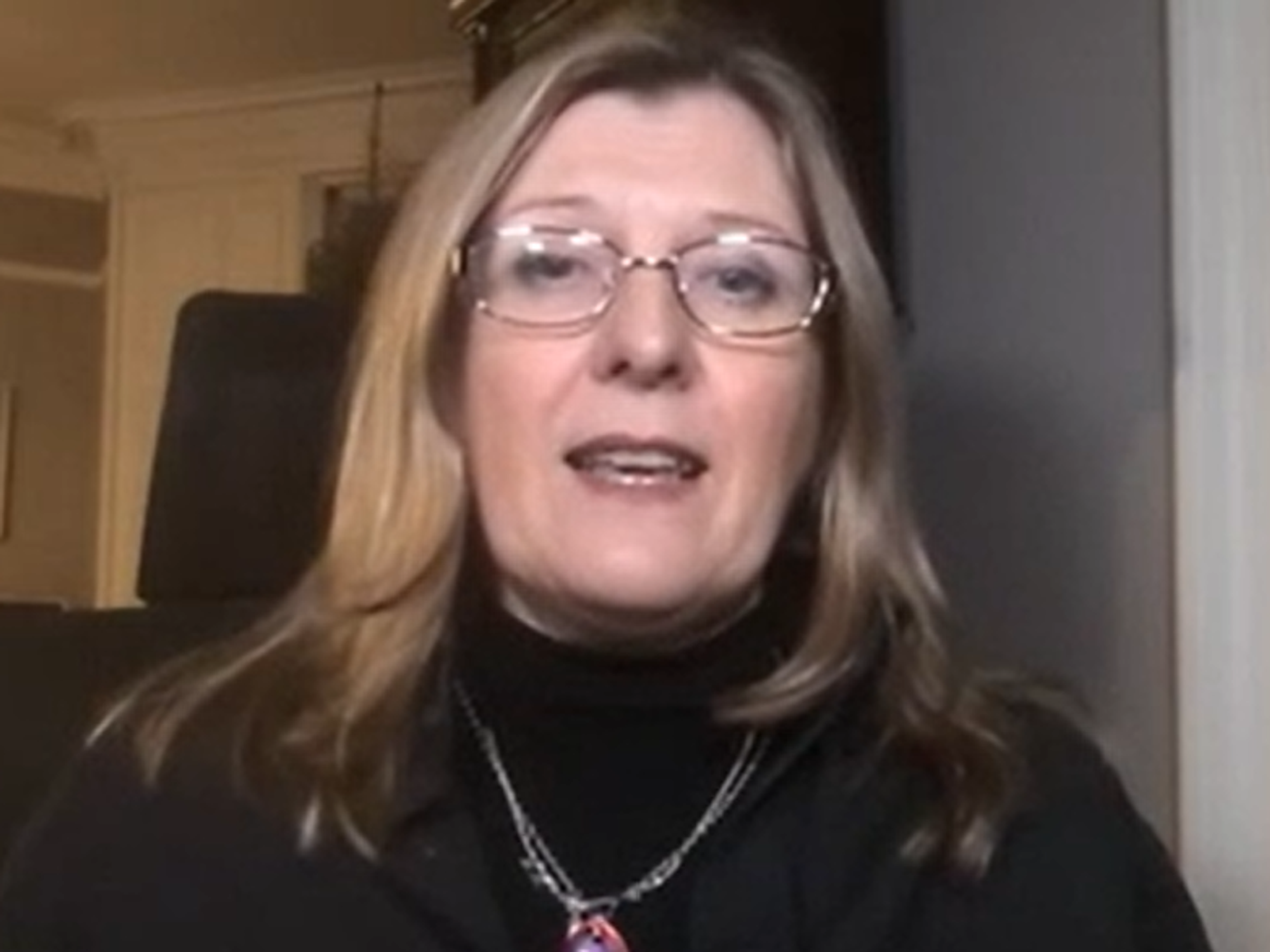Three ancient Egyptian tombs dating back more than 3,500 years discovered near Valley of the Kings

The burial sites belonged to prominent statesmen and follow a series of high-profile finds in Egypt this year
Don't Miss
Most Read
Latest
Archaeologists in Egypt have made a remarkable discovery of a trio of ancient tombs dating back more than 3,500 years.
The burial sites, unearthed in the Dra Abu el-Naga necropolis in the southern Egyptian city of Luxor, belonged to prominent statesmen from the New Kingdom period which began around 1550 BC.
One of the tombs, which was found to be mostly destroyed, belonged to Amum-em-Ipet from the Ramesside period, while the other two date back to the 18th Dynasty.
The 18th Dynasty tombs belonged to a man called Baki, who worked as a supervisor of a grain silo, and another individual identified only as S - who served as a supervisor at the Temple of Amun, a writer and the mayor of the northern oases.

The burial sites were unearthed in the Dra Abu el-Naga necropolis in the southern Egyptian city of Luxor
|MINISTRY OF TOURISM AND ANTIQUITIES
The names and titles of the tombs' owners were identified through inscriptions found within the burial chambers, according to Mohamed Ismail Khaled, the secretary-general of Egypt's Supreme Council of Antiquities.
But Khaled counselled that further study of additional inscriptions would be needed to gain a more comprehensive understanding of the tombs' owners.
The discovery represents a significant addition to Egypt's rich archaeological record, and has shed light on the lives of officials who served during the New Kingdom period.
Sherif Fathir, Egypt's tourism and antiquities minister, described the find as "a significant scientific and archaeological achievement."
MORE ANCIENT EGYPTIAN FINDS:

Researchers found a series of painted wooden figures in the ancient tomb
|MINISTRY OF TOURISM AND ANTIQUITIES
The ministry views archaeology as a key sector which can substantially boost cultural tourism in Egypt, Fathir said.
And the tombs' discovery comes after a recent string of important archaeological finds in the north African nation.
Earlier this year, archaeologists announced the discovery of Egypt's first royal tomb since King Tutankhamun's burial chamber was unearthed more than a century ago.
The ancient resting place of King Thutmose II, who ruled around 3,500 years ago, was found in west Luxor's Valley of the Kings.
LATEST ARCHAEOLOGY UPDATES FROM GB NEWS:

Egypt's tourism and antiquities minister has described the find as 'a significant scientific and archaeological achievement'
|MINISTRY OF TOURISM AND ANTIQUITIES
Elswhere, researchers found ancient rock-cut tombs and 3,600-year-old burial shafts at the causeway of Queen Hatshepsut's funerary temple at Deir al-Bahri on the Nile's West Bank.
While late last year, a US-Egyptian team excavated a tomb with 11 sealed burials in the South Asasif necropolis, next to the Temple of Hatshepsut.
All of the discoveries have come ahead of the much-anticipated full opening of the Grand Egyptian Museum this summer.
Though a final official date is still yet to be confirmed, the museum is set showcase more than 100,000 artefacts recovered from beneath the Egyptian sand.











